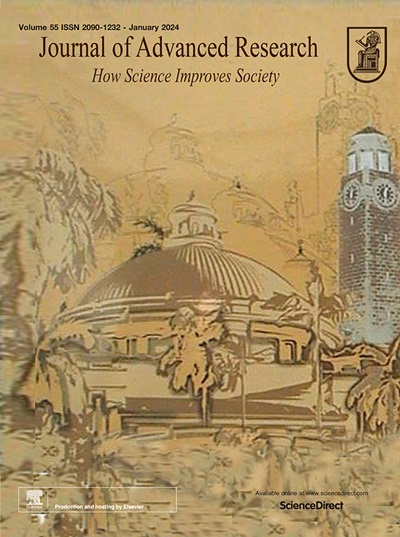Dual effects of vaginal Candida albicans on human papillomavirus infection: A large-scale multicenter study in Chinese women
IF 11.4
1区 综合性期刊
Q1 MULTIDISCIPLINARY SCIENCES
引用次数: 0
Abstract
Objectives
Vaginal infections caused by Candida albicans and human papillomavirus (HPV) are common, yet their interactions remain complex and poorly understood.Methods
We conducted a nationwide, multicenter cohort study in China involving 6,689 women aged 18 to 50 years to examine the association between C. albicans infection and HPV acquisition and persistence. C. albicans infection was defined by positive results on both wet-mount microscopy and culture. HPV genotypes (21 types) and other sexually transmitted infections (STIs, eight types) were detected using polymerase chain reaction. Cervical lesions were assessed via the ThinPrep cytologic test (TCT).Results
In cross-sectional analyses, C. albicans infection was associated with a lower likelihood of concurrent HPV detection (odds ratio (OR), 0.92, 95 % confidence interval (CI), 0.88–0.96), affecting both high-risk and low-risk genotypes. However, longitudinal follow-up analyses revealed that baseline C. albicans infections was linked to an increased risk of persistent HPV infection among women already infected (hazard ratio (HR), 1.77, 95 % CI, 1.03–3.06). The presence of C. albicans was not significantly associated with other STIs or abnormal cervical cytology. These findings suggest a dual effect of C. albicans on HPV: protection against initial viral acquisition but promotion of viral persistence in those already infected.Conclusions
Our findings reveal an unexpected dual role of C. albicans in HPV infection: initial protective effects, followed by enhanced viral persistence during co-infection. These results highlight the complexity of host-microbe interactions in the vaginal environment and underscore the need to consider fungal colonization in the natural history of HPV. The contrasting effects of C. albicans on HPV acquisition and persistence provide novel insights into the complex dynamics of polymicrobial interactions in the female reproductive tract.Significance
Statement: This study demonstrates for the first time that C. albicans exhibits opposing effects on HPV infection at different stages, suggesting stage-specific host-microbe interactions that may influence viral pathogenesis. These findings have important implications for understanding the role of fungal colonization in viral infections and may inform strategies for HPV management.

阴道白色念珠菌对人乳头瘤病毒感染的双重作用:一项针对中国妇女的大规模多中心研究
目的白色念珠菌和人乳头瘤病毒(HPV)引起的阴道感染是常见的,但它们之间的相互作用仍然很复杂,而且人们对它们的了解很少。方法:我们在中国开展了一项全国性、多中心队列研究,涉及6689名年龄在18 - 50 岁的女性,以研究白色念珠菌感染与HPV获得和持续之间的关系。白色念珠菌感染定义为湿片显微镜和培养阳性结果。采用聚合酶链式反应检测HPV基因型(21型)和其他性传播感染(8型)。宫颈病变通过ThinPrep细胞学检查(TCT)评估。结果在横断面分析中,白色念珠菌感染与并发HPV检测的可能性较低相关(优势比(OR), 0.92, 95 %置信区间(CI), 0.88-0.96),影响高危和低危基因型。然而,纵向随访分析显示,基线白色念珠菌感染与已经感染的女性持续HPV感染的风险增加有关(危险比(HR), 1.77, 95 % CI, 1.03-3.06)。白色念珠菌的存在与其他性传播感染或宫颈细胞学异常没有显著相关性。这些发现表明白色念珠菌对人乳头状瘤病毒有双重作用:防止最初的病毒获得,但促进病毒在已经感染的人体内的持久性。结论研究结果揭示了白色念珠菌在HPV感染中的双重作用:最初的保护作用,随后在合并感染期间增强病毒持久性。这些结果突出了阴道环境中宿主-微生物相互作用的复杂性,并强调了在HPV自然史中考虑真菌定植的必要性。白色念珠菌对HPV获得和持续的对比作用为女性生殖道中多微生物相互作用的复杂动力学提供了新的见解。意义:本研究首次证明白色念珠菌在不同阶段对HPV感染表现出相反的作用,提示阶段特异性宿主-微生物相互作用可能影响病毒的发病机制。这些发现对理解真菌定植在病毒感染中的作用具有重要意义,并可能为HPV管理策略提供信息。
本文章由计算机程序翻译,如有差异,请以英文原文为准。
求助全文
约1分钟内获得全文
求助全文
来源期刊

Journal of Advanced Research
Multidisciplinary-Multidisciplinary
CiteScore
21.60
自引率
0.90%
发文量
280
审稿时长
12 weeks
期刊介绍:
Journal of Advanced Research (J. Adv. Res.) is an applied/natural sciences, peer-reviewed journal that focuses on interdisciplinary research. The journal aims to contribute to applied research and knowledge worldwide through the publication of original and high-quality research articles in the fields of Medicine, Pharmaceutical Sciences, Dentistry, Physical Therapy, Veterinary Medicine, and Basic and Biological Sciences.
The following abstracting and indexing services cover the Journal of Advanced Research: PubMed/Medline, Essential Science Indicators, Web of Science, Scopus, PubMed Central, PubMed, Science Citation Index Expanded, Directory of Open Access Journals (DOAJ), and INSPEC.
 求助内容:
求助内容: 应助结果提醒方式:
应助结果提醒方式:


